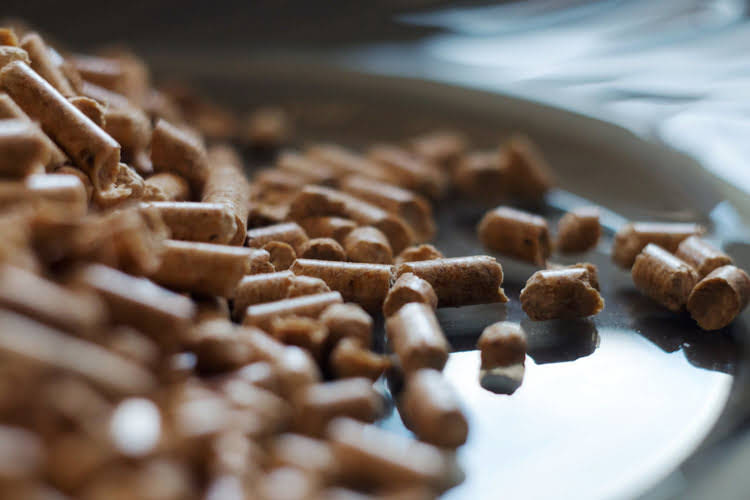
Although the efforts of these workers are essential to production, it would be either impractical or impossible to accurately trace their costs to specific units of product. Since nonmanufacturing overhead costs are treated as period costs, they are not allocated to goods produced, as would be the case with factory overhead costs. Since they are not allocated to goods produced, these costs never appear in the cost of inventory on a firm’s balance sheet.

Manufacturing costs include direct materials, direct labor, and factory overhead. In most situations the amount of direct labor required is directly correlated with the amount of finished goods produced. For example, wages and related benefits of employees who operate machinery to produce valves represent direct labor costs for a Company.
Direct Manufacturing Overhead Costs
The costs are typically presented in the income statement as separate line items. They are impacted by different factors and thus their appropriate categorization is important. Manufacturing cost overruns indicate production inefficiency whereas non-manufacturing cost overruns indicate inefficiency in other areas of operations. Each of them requires a different set of cost control measures, making appropriate cost categorization even more essential.
Selling and administrative expenses may also include utilities, insurance, property taxes, depreciation, supplies, maintenance, salaries, etc. that are incurred in a business but outside of the factory production area. Even though nonmanufacturing overhead costs are not product costs according to GAAP, these expenses (along with product costs and profit) must be covered by the selling prices of a company’s products. In other words, selling prices must be large enough to cover SG&A expenses, interest expense, manufacturing overhead, direct labor, direct materials, and profit. Direct labor costs include the labor costs of all employees actually working on materials to convert them into finished goods. As with direct material costs, direct labor costs of a product include only those labor costs distinctly traceable to, or readily identifiable with, the finished product. The wages paid to a construction worker, a pizza delivery driver, and an assembler in an electronics company are examples of direct labor.
Manufacturing vs non-manufacturing costs
The more valves are to be produced, the more employees will be required to operate machinery, paint, assemble, etc. For example, the company purchases metal parts (raw material) to produce valves. Therefore, parts have a variable nature; the amount of raw materials bought and used changes in direct proportion to the amount https://www.bookstime.com/ of valves created. For this Company, other direct materials would include, for example, plastic parts and paint. Recall from other tutorials that variable costs change in proportion to
production. For instance, in our example of Friends Company, the company
purchases metal parts (raw material) to produce valves.
- In other words, these costs are not part of a manufacturer’s product cost or its production costs (which are direct materials, direct labor, and manufacturing overhead).
- Overhead is part of making the good or providing the service, whereas selling costs result from sales activity, and administrative costs result from running the business.
- Examples of one on one labor cost include labor cost regarding machine operators and painters within a manufacturing company.
- Many employees receive fringe benefits paid for by employers, such as payroll taxes, pension costs, and paid vacations.
In the end, management should know whether each product’s selling price is adequate to cover the product’s manufacturing costs, nonmanufacturing costs, and required profit. Selling expenses are costs incurred to obtain customer orders and get the finished product in the customers’ possession. Advertising, market research, sales salaries and commissions, and delivery and storage of finished goods are selling costs. The costs of delivery and storage of finished goods are selling costs because they are incurred after production has been completed. Therefore, the costs of storing materials are part of manufacturing overhead, whereas the costs of storing finished goods are a part of selling costs.
Nonmanufacturing Overhead Outline
However, designers and sales personnel are considered nonmanufacturing labor costs. Marketing or selling costs include all costs necessary to secure customer orders and get the finished product into the hands of the customers. Examples of marketing or non manufacturing costs include selling costs include advertising costs, shipping costs, sales commission and sales salary. On the other hand, a product with a low gross profit may actually be very profitable, if it uses only a minimal amount of administrative and selling expense.
Manufacturing costs are those costs that are directly involved in manufacturing of products and services. Examples of manufacturing costs include raw materials costs and salary of labor workers. For instance, managers of consumer goods companies such as Procter & Gamble and Anheuser-Busch prefer to allocate the high expense of advertising to a certain product. Variance analysis modeling tracks the changes or trends of different costs over time to better inform budgeting decisions. Learn how this model can be used with direct materials, direct labor, and overhead variances. Manufacturing and non-manufacturing costs together form total costs for a manufacturing entity.
Examples
Thus, management attention must be focused on both the core and the ancillary costs to control and manage them with a view to maximize profitability on long term basis. Direct labor – cost of labor expended directly upon the materials to transform them into finished goods. Direct labor refers to salaries and wages of employees who work to convert the raw materials to finished goods. It encompasses the costs that must be incurred so as to produce marketable inventory. Entities may manufacture several types of products and the sum total of all the costs involved in producing those products is termed as manufacturing cost.
The purpose of addressing these costs differently as part of a total manufacturing cost formula is based on the fact that they are accounted for differently when structuring the income statement and balance sheet. Nonmanufacturing overhead costs are the business expenses that are outside of a company’s manufacturing operations. In other words, these costs are not part of a manufacturer’s product cost or its production costs (which are direct materials, direct labor, and manufacturing overhead). Manufacturing costs are the costs incurred during the production of a product. These costs include the costs of direct material, direct labor, and manufacturing overhead.
Direct materials usually includes a significant portion regarding total manufacturing charge. Direct materials should be distinguished from indirect materials (part of overhead costs), about which we
will talk later. Nonmanufacturing overhead costs are the company’s selling, general and administrative (SG&A) expenses plus the company’s interest expense.
Larimar Therapeutics Reports Third Quarter 2023 Operating and … – BioSpace
Larimar Therapeutics Reports Third Quarter 2023 Operating and ….
Posted: Tue, 14 Nov 2023 14:53:36 GMT [source]
This is the relationship between direct materials, direct labor, overhead, prime cost and conversion cost. This term is somewhat misleading, since it seems to imply unprocessed natural resources like wood pulp or iron ore. Actually raw materials refer to any materials that are used in the final product; and the finished product of one company can become raw material of another company. For example plastic produced by manufacturers of plastic is a finished product for them but is a raw material for Compaq Computers for its personal computers. Sometimes it is difficult to discern between manufacturing and non-manufacturing costs.